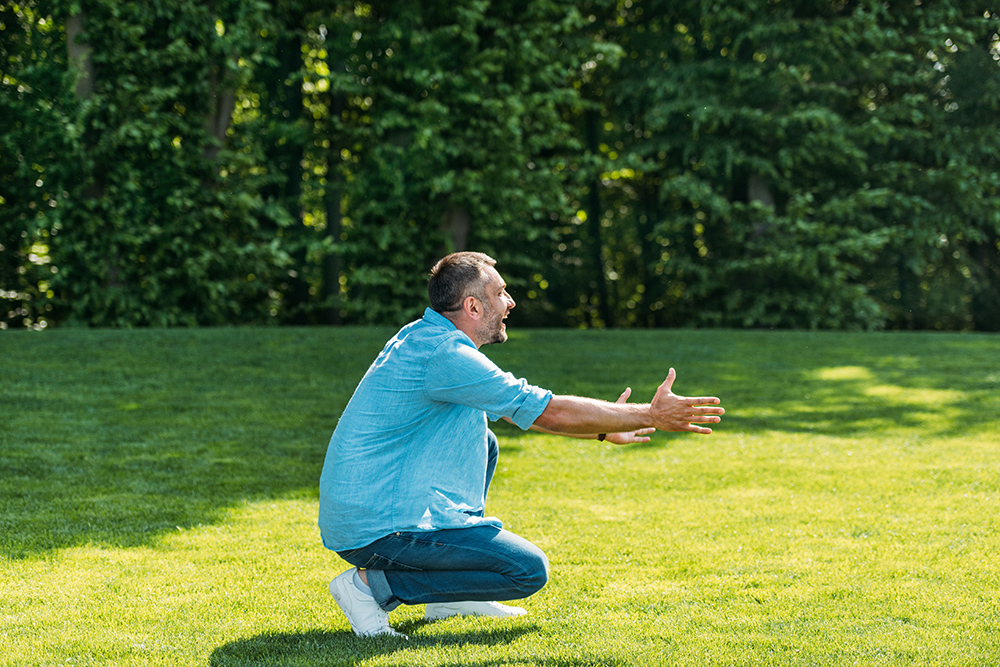Knee replacement surgery, whether partial or total, can be a transformative procedure for people who suffer from severe knee pain and mobility issues. Questions about specific activities, like kneeling, can come up on your road to recovery. The ability to kneel after knee replacement surgery can vary from person to person. Various factors can influence the type of surgery, rehabilitation progress and individual comfort levels. Kneeling puts direct pressure on the knees. Many people can kneel after a knee replacement; however, it’s essential to approach it with caution and gradual progression.
Kneeling after partial knee replacement
Partial knee replacement (PKR) involves replacing only the damaged part of the knee joint. It helps preserve the healthy ligaments and bone. People who undergo a partial knee replacement may have an easier time resuming activities, like kneeling, than those with a total knee replacement. The overall joint mechanics are less disrupted with a PKR. This is due to only a part of the knee being replaced. With less disruption, the natural range of motion can be better preserved.
During their recovery from a PKR, people are often encouraged to reintroduce kneeling into their routine during the rehabilitation process gradually. Physical therapists can help guide you through specific exercises that are designed to help strengthen the knee and improve your flexibility. These exercises can help build a smooth transition back to kneeling activities.
Kneeling after total knee replacement
Total knee replacement (TKR) is a more extensive procedure involving total knee joint replacement with an artificial implant. It can be more challenging to kneel after a total knee replacement. This can be because of the altered joint mechanics and potential stiffness that can be associated with surgery. However, with time, making sure to complete therapy exercises and following postoperative guidelines, you may be able to regain the ability to kneel.
The timeline for kneeling again after a TKR can vary from person to person. In the beginning weeks and months after surgery, recovery focuses on reducing swelling, regaining range of motion and strengthening the surrounding muscles. As rehab progresses, you may gradually attempt to kneel under the guidance of your physical therapist.
What to do if kneeling causes you pain
It’s common to feel pain when kneeling after a knee replacement. It’s crucial to address this discomfort promptly to help prevent complications. Persistent pain can be an indication of a variety of factors, including inflammation, muscle weakness or using improper technique during movement. Some things to consider and steps to take if kneeling causes you pain include:
- Health care team consultation — If you are experiencing pain when kneeling, it’s important to consult with your physical therapist or orthopedic surgeon. They can assess your situation, identify the underlying cause and guide you on any needed adjustments.
- Technique modification — It’s important to use the correct technique when attempting to kneel. You should use gradual and controlled movements as well as having proper support. This helps make a significant difference in minimizing discomfort and allowing you to kneel.
- Physical therapy — Targeted physical therapy exercises are designed to help address pain during kneeling. They can help you strengthen the muscles around your knee, improve your flexibility and help you practice controlled movements that can help improve your ability to kneel comfortably.
- Supportive aids — You can consider using supportive aids like kneepads or cushions to help reduce the direct pressure on the knee. This can help alleviate discomfort and make the activity more manageable.
- Pain management strategies — Temporary discomfort can be associated with kneeling after knee replacement. This pain can be temporarily relieved by taking over-the-counter medications or prescribed pain relievers. Medication recommended by your health care provider should be used as directed.
- Gradual progression — It’s important to progress slowly and not force any movements, including kneeling, after a knee replacement. Listening to your body’s signals and using gradual progression can allow your knee joint to adapt and slowly become more accustomed to the activity.
Physical therapy for knee replacement recovery
Physical therapy can be an effective approach to help you in your knee replacement recovery and gradual progression to regain your ability to kneel. Techniques that can be beneficial can include:
- Manual therapy — Manual therapy includes soft tissue mobilization and joint mobilization techniques intended to help improve your joint flexibility and address any specific limitations post-knee replacement.
- Graston Technique® — The Graston Technique is an instrument-assisted soft tissue mobilization certified physical therapists use. It is intended to help break down scar tissue, promote tissue healing and improve overall tissue function.
- Trigger point therapy — Incorporating trigger point therapy can help alleviate muscle knots and tightness. It can help promote comfort and address any localized areas of discomfort.
- Therapeutic exercises — Physical therapists can design customized therapeutic exercise plans to help strengthen your muscles around the knee, improve your range of motion and promote joint stability during the post-knee replacement rehabilitation process.
Let Panther PT help you kneel again after a knee replacement
At Panther Physical Therapy, we understand how a knee replacement can impact daily activities. The question of being able to kneel after a knee replacement is a common concern, and our expert team is dedicated to helping you with personalized care. Through our customized treatment plans, we can help empower you on your journey to regain functional abilities after your knee replacement. We believe in the transformative potential of physical therapy and in helping to improve joint health and well-being. We are your supportive partner in your post-knee replacement recovery and can help guide you toward a more active and fulfilling life.
Call us or request an appointment today to start your knee replacement rehabilitation.

